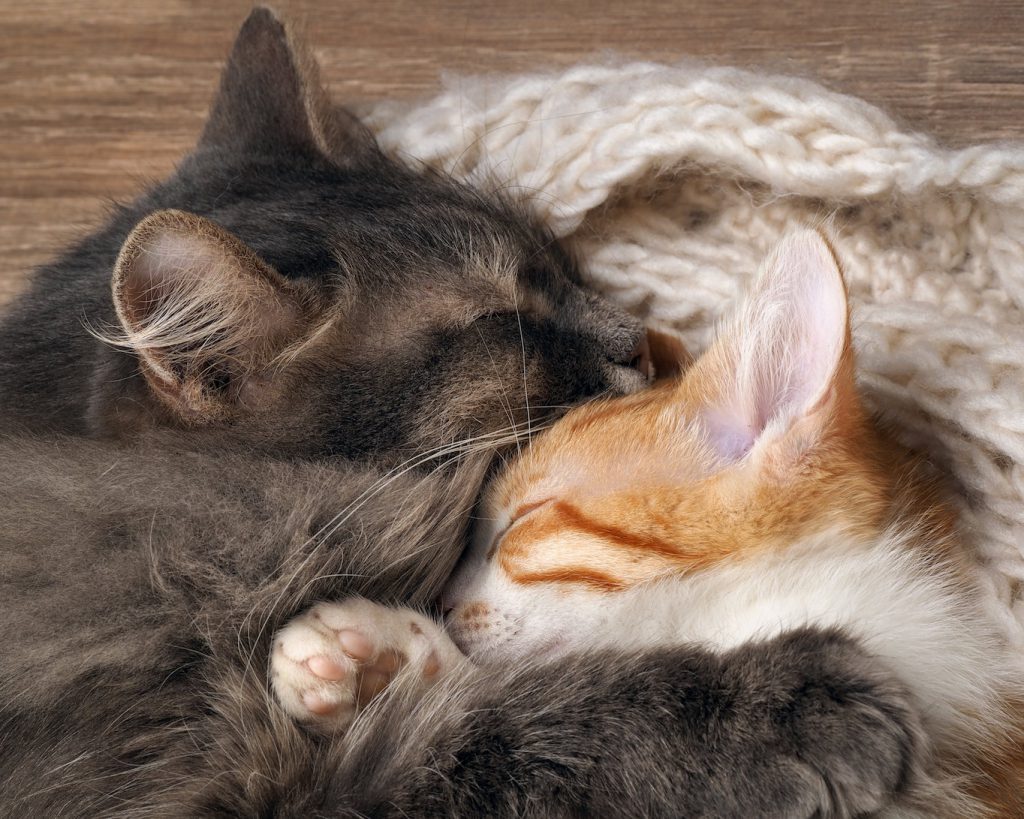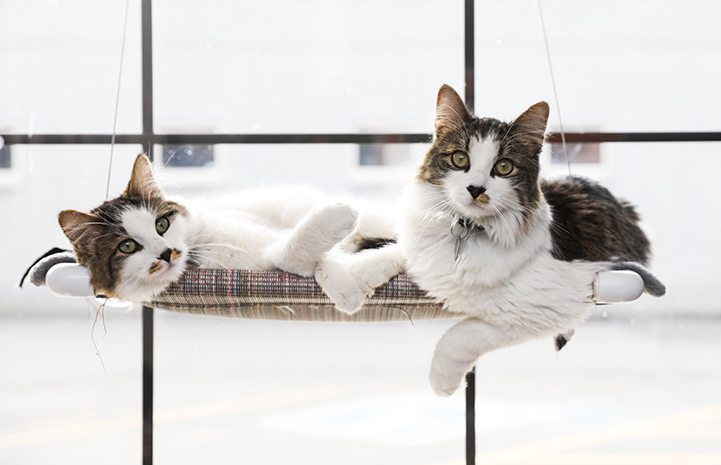No products in the cart.

[vc_row][vc_column][vc_column_text]Ida Karlsson from Melbourne, VIC writes: I have recently rescued a couple of cats from a rescue shelter, and their past histories wasn’t well known by the volunteers. The cats were next to each other in their cages and seemed to get along. What can I do to help them adjust to their new life with us?
Firstly, it is wonderful that you have chosen to adopt adult cats from a shelter – sometimes cats are overlooked by fluffy kittens, and in my opinion it can be a lot easier to take on adults rather than raising kittens! Cats need time to adapt to not only their new surroundings, but also to each other. Whilst they may have seemed friendly together at the shelter, it could be a different story once they are in a new home. Here is what we can do to help them feel comfortable and safe in their new home and also with each other:
Communication is the Key:
You are giving that animal a chance to share a life of love, mutual respect and tender loving care that they may not have experienced before. And you can be sure your animals will return that to you tenfold! One of the challenges of adopting rescue animals is not knowing their past. There may be unusual behaviours or traumas they may have experienced that their previous carers know nothing about. Using telepathic communication means we can ask these animals what has happened in their lives before the adoption, how we can assist them in any of those issues and what do they wish their lives to be like in their new home. We can also intuitively feel their personality traits, to get a heads up of what they are like as individuals. Having this information is absolutely crucial to creating a harmonious and happy environment for your new animal companions. I mean, when we move in with a new roommate we ask about their preferences and we get to know each other. Why not do the same with your new animal companions?
New Surroundings:
Bringing your new cats home can be the most stressful part of the day for them. They have left what they have come to expect in the animal shelter, and their future now may feel questionable. As these cats have not been together before without a barrier, it is ideal to let them out in separate rooms. Let them get used to new smells, sounds and learning about their territory on their own. Let them take as long as they like to come out. Remember to have all doors closed to the outside as an escape at this time in an unknown environment could be disastrous. Also confine them to one room until they fully investigate and then begin to open up other areas to them, however keep the cats separate at this time. This may take a few days, until they feel comfortable with the new environment. As they move into other rooms that the other cat has occupied they will also be able to become accustomed to their scent in a natural slow way. You can give them flower essences to help ease the tension and calm the nerves. Rescue Remedy and the Flower essence Walnut are great to use for major changes such as moving to a new home and adapting to a new cat roommate. Add a few drops to their water and also in their food, the more frequently they take it the better they will adapt. You can also take some for yourself, it will help reduce your tension and anxiety, as your cats will need to be around calm and assuring energy.
Meeting for the first time:

So, how do we introduce the cats to each other? Cats by nature are solitary animals, they do not work in groups. Lions are the only cats that live in a pride, and there is a very specific hierarchical structure set in place. In this situation, having just two cats is ideal, going further than two is sometimes asking for trouble. The principle less is more is perfect when it comes to cats.
You can slowly introduce your cats by meeting in separate crates in a big open space such as the living room or kitchen. Both cats need to feel they have the option of not being too close if they feel unsafe, but are aware the other is there. You can slowly move the crates together so they can spend time together getting used to one another. Before letting them meet without a barrier, ensure you have some tools to maintain safety for both cats. Keep a water spray bottle and some tiny cushions (you can get these toy cushions from any pet accessory store) in case you need to prevent an altercation. Give them the option of just watching and sensing each other. Watch out for defensive signs such as hair bristling, ears down, growling, spitting or hiding away at the back of the crate. If they are forthcoming and curious about each other, leave their crate doors open and allow them to take their time to come out and get to know each other. If any defensive signs are evident and you predict an altercation is imminent remove the offending cat out of the area and try again later. If this happens again do the same until you feel they are now calm with each other. However you may still get some aggressive behaviour even after a lapse of time so you may need to use the spray bottle to diffuse the situation. Make sure it is just a quick short squirt as we want to stop the behaviour not create heightened anxiety. They will soon get the message. If the spray doesn’t work try throwing a tiny soft cushion between them or a clap of the hands to break the tension of the moment.
Laying Down the Law of the Home
As time goes on and they get used to each other, you will need to be on high alert to watch out for any dominance over the other or aggressive attacks. Each cat needs to understand that there are boundaries, so safety can be maintained. They need to physically see you setting these boundaries so the more vulnerable cat can feel their life is in safety and the aggressor knows they will be brought to order. Every human member of the house has to be on the same page so the training in this regard can be maintained the same way. The consistency will determine how successfully the cats can live in harmony. It is crucial that both cats feel safe and happy in their new home. Both your cats will soon learn that they will be protected no matter what. It will allow both cats to feel safe to roam around the home when you are not there. The sooner the boundaries are set the better as the longer unwanted behaviour goes on the harder it is to prevent it.
Claiming Their Space
Cats do have their favourite sleeping spots, sunny posts, and areas that they just claim to be theirs. Sometimes cats will have the same favourite spots and sharing those spaces isn’t on the agenda. That particular area is seen as territory, and it is considered a violation if one cat tries to take it from another. You can prevent the other cat from trying to take over by correcting any behaviours and providing some extra places or things for them to try. Boxes, comfy cat beds, a sturdy cat scratcher, or more stands near windows will give more options for your cats to enjoy within their home. If you have a courtyard or backyard, it is ideal to create a cat run by meshing in areas for them to enjoy being outside with fresh air. It is also another space for your cats to seek solitude. However, if they both wish to be outside together, the same rules apply in the cat run as they do in the home. Their safety and boundaries are the key to creating a happy and harmonious environment for everyone.
If you have animals already in your home and you are introducing new ones, the same tools and instructions apply to create that happy and harmonious environment. It is possible to create a space where everyone lives in harmony as long as they feel safe and free to do as they wish. Your success is determined by how much work you put in. You will be glad you did, because both you and your animals will be happier and healthier because of it.
 [/vc_column_text][/vc_column][/vc_row]
[/vc_column_text][/vc_column][/vc_row]
